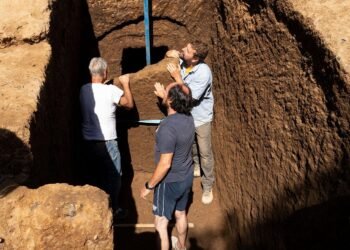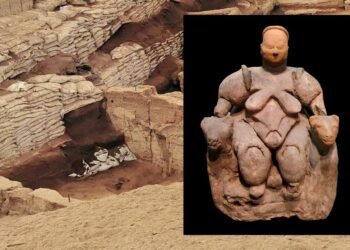In Palestine around 1,300 years ago, a scribe erased a Syriac text inscribed on a book of the Gospels due to the scarcity of parchment in the Middle Ages, where manuscripts were commonly reused.

Recently, a scientist from the Austrian Academy of Sciences (ÖAW) discovered a lost section of the Bible, which is a manuscript fragment of the Syriac translation written in the third century and copied in the sixth century.
This manuscript fragment is considered one of the earliest textual witnesses to the Gospels and is a crucial element in the history of the New Testament. Grigory Kessel, a medievalist, has made the missing words on this palimpsest legible again.
During the Medieval Ages, parchment was rare in the desert, which led to the frequent redone of manuscripts. “The tradition of Syriac Christianity knows several translations of the Old and New Testaments,” said Grigory Kessel, “Until recently, only two manuscripts were known to contain the Old Syriac translation of the Gospels.”
One of the manuscripts that contain the Old Syriac translation of the Gospels is currently housed at the British Library in London, while another was discovered as a palimpsest in St. Catherine’s Monastery at Mount Sinai.
In the “Sinai Palimpsests Project,” fragments from a third manuscript were recently identified. Grigory Kessel used ultraviolet photography to identify a small manuscript fragment in the Vatican Library manuscript, which can now be considered as the fourth textual witness, as the third layer of text, i.e., double palimpsest.
This fragment is the only known remnant of the fourth manuscript that attests to the Old Syriac version and provides a unique gateway to the early phase in the history of the textual transmission of the Gospels.
The Syriac translation of Matthew chapter 12, verse 1, for example, differs from the original Greek, where it says, “At that time Jesus went through the grainfields on the Sabbath; and his disciples became hungry and began to pick the heads of grain and eat,” while the Syriac translation reads, “[…] began to pick the heads of grain, rub them in their hands, and eat them.”
According to Claudia Rapp, director of the Institute for Medieval Research at the OeAW, Grigory Kessel has made a significant discovery based on his extensive knowledge of old Syriac texts and script characteristics.
The Syriac translation found in the manuscript was written at least a century before the oldest surviving Greek manuscripts, including the Codex Sinaiticus.
The earliest known manuscripts with this Syriac translation date back to the 6th century and are preserved in the erased layers, known as palimpsests, of newly written parchment leaves.
Claudia Rapp notes that this discovery highlights the importance and productivity of the interplay between modern digital technologies and basic research when dealing with medieval manuscripts.
Österreichische Akademie der Wissenschaften
The results are published in the journal New Testament Studies.























